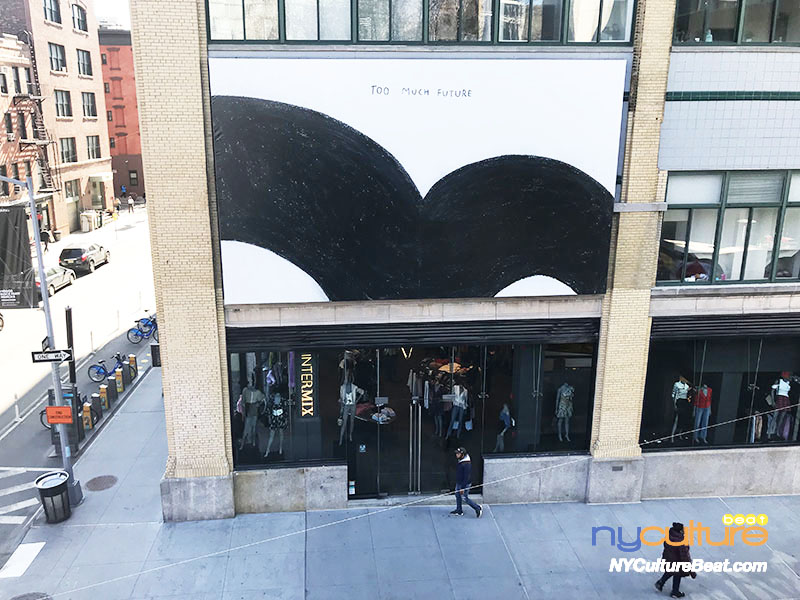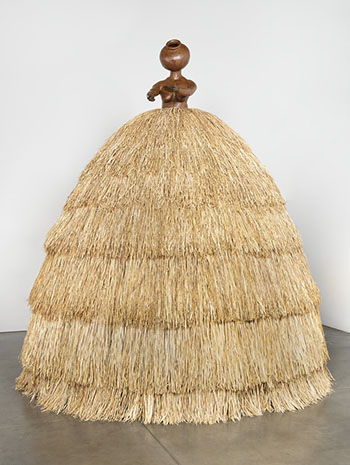CulBeat Express
2019.04.10 13:37
크리스틴 선 김 작품 휘트니뮤지엄 소장
조회 수 777 댓글 0
WHITNEY MUSEUM ANNOUNCES 300 RECENT ACQUISITIONS AND 60 ARTISTS NEW TO THE COLLECTION, INCLUDING NINA CHANEL ABNEY, MERIEM BENNANI, ED CLARK, BARBARA HAMMER, CHANNA HORWITZ, SIMONE LEIGH, WILLA NASATIR, MARY WEATHERFORD, AND OTHERS

Christine Sun Kim, Too Much Future, 2017, Charcoal on paper, Sheet: 17 3/16 × 29 1/8in. (43.7 × 74 cm), Purchase, with funds from the Drawing Committee 2018.183
NEW YORK, April 9, 2019—The Whitney Museum of American Art announced today that it has acquired 300 works of art in the last six months. As a result of these acquisitions, 60 new artists and collectives have entered the collection.
Several of the acquisitions were first presented in the Whitney's ongoing series of exhibitions focused on emerging artists, including Carolina Caycedo and Lena Henke (Between the Waters, 2018), Christine Sun Kim (Christine Sun Kim: Too Much Future, 2018), Guadalupe Maravilla, Ronny Quevedo, and Clarissa Tossin (Pacha, Llaqta, Wasichay: Indigenous Space, Modern Architecture, New Art, 2018), and Willa Nasatir (Willa Nasatir, 2017).
In addition, the Whitney deepened its commitment to artists already represented in the collection by adding works by Diane Arbus, Richard Avedon, Carol Bove, Bruce Conner, John Currin, Roe Ethridge, Nan Goldin, David Hammons, Hock E Aye Vi Edgar Heap of Birds, Jasper Johns, Mark Rothko, Wu Tsang, David Wojnarowicz, Grant Wood, and others.

Simone Leigh, Cupboard VIII, 2018. Stoneware, steel, raffia, and Albany slip, 125 x 120 x 120 in. Image courtesy the artist and Luhring Augustine, New York. © Simone Leigh. Photograph by Farzad Owrang
“The Whitney’s collection is a living, growing, and dynamic resource that allows us to continually reframe the history of American life and artistic culture. Our new acquisitions permit us to present new art histories, especially when we put those works on the Whitney’s walls so soon after acquiring them. Recent acquisitions such as Emma Amos’s Baby (1966) and Kay WalkingStick’s April Contemplating May (1972) are now displayed in Spilling Over: Painting Color in the 1960s, and an important 1959 painting by Ed Clark will reenergize our understanding of mid-century painting when it hangs this summer as part of a new collection display,” noted David Breslin, DeMartini Family Curator and Director of the Collection.
Scott Rothkopf, Senior Deputy Director and Nancy and Steve Crown Family Chief Curator added: “We’re thrilled that many of our recent acquisitions, particularly by artists new to the collection, arose through our reenergized emerging artist program. This continues our historical commitment to acquiring works by contemporary artists directly from our groundbreaking exhibitions and allows us to extend our dialogue with these artists as stewards of their work. We also are delighted that twelve of the artists in the upcoming Whitney Biennial are already in the collection, including Meriem Bennani, Barbara Hammer, Simone Leigh, and Christine Sun Kim, whose works have just entered the collection for the first time.”
The Whitney’s collection includes nearly 25,000 works created by some 3,500 artists during the twentieth and twenty-first centuries. This focus on the contemporary, along with a deep respect for artists’ creative process and vision, has guided the Museum’s collecting ever since its founding in 1930. The collection begins with Ashcan School painting and follows the major movements of the twentieth century in America, with strengths in modernism and Social Realism, Precisionism, Abstract Expressionism, Pop art, Minimalism, Postminimalism, art centered on identity and politics that came to the fore in the 1980s and 1990s, and contemporary work.
ABOUT THE WHITNEY
The Whitney Museum of American Art, founded in 1930 by the artist and philanthropist Gertrude Vanderbilt Whitney (1875–1942), houses the foremost collection of American art from the twentieth and twenty-first centuries. Mrs. Whitney, an early and ardent supporter of modern American art, nurtured groundbreaking artists at a time when audiences were still largely preoccupied with the Old Masters. From her vision arose the Whitney Museum of American Art, which has been championing the most innovative art of the United States for more than eighty years. The core of the Whitney’s mission is to collect, preserve, interpret, and exhibit American art of our time and serve a wide variety of audiences in celebration of the complexity and diversity of art and culture in the United States. Through this mission and a steadfast commitment to artists themselves, the Whitney has long been a powerful force in support of modern and contemporary art and continues to help define what is innovative and influential in American art today.







